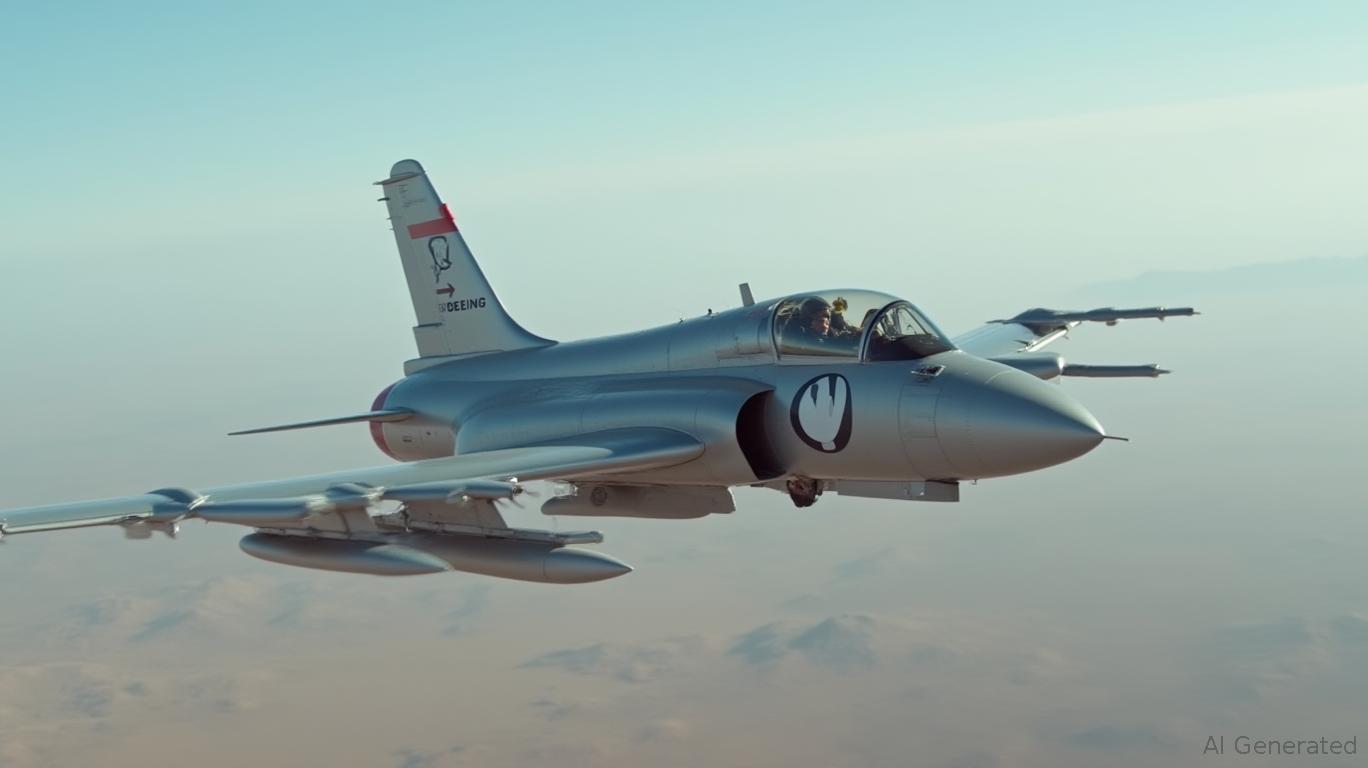Boeing's Turnaround Potential: Can Strategic Reforms Overcome Persistent Challenges?
Boeing's journey under CEO Kelly Ortberg has been a study in balancing ambition with pragmatism. Since taking the helm in late 2023, Ortberg has prioritized stabilizing the aircraft giant's finances, rebuilding regulatory trust, and overhauling its culture—all while navigating technical hurdles in its defense and commercial programs. With Q1 2025 results showing progress but also lingering risks, investors must weigh whether Boeing's turnaround is credible or if the company remains a victim of its own past missteps.
Ask Aime: Is Boeing's turnaround under CEO Kelly Ortberg credible?
Defense: A New Era for Boeing's Fighter Business
Ortberg's defense strategy hinges on the $24 billion F-47 fighter contract, Boeing's largest defense win in decades. The program aims to revive its fighter portfolio, which has struggled as older models like the F/A-18 near obsolescence. By emphasizing fixed-price contracts, rigorous baseline management, and close supplier alignment, Boeing hopes to avoid the cost overruns that plagued earlier projects like the KC-46 tanker.

The F-47's success is critical. While the program's fixed-price structure reduces financial risk, Boeing must execute flawlessly to regain Pentagon trust after past delays. The company's defense revenue dipped 9% in Q1 2025, underscoring the need for F-47 to offset stagnation in other programs like the delayed Air Force One.
Commercial Aircraft: Progress Amid Technical Headwinds
On the commercial side, Boeing's focus is twofold: ramping production of proven models and resolving certification hurdles for the 777X. The 737 MAX is on track to hit 42 monthly builds by year-end, though FAA approval for higher rates remains pending after a January 2024 door-plug incident. Meanwhile, the 777X—described as a “game-changer” for widebody markets—is finally nearing certification after addressing thrust-link and anti-ice system flaws.
Q1's 57% year-over-year jump in commercial deliveries (to 130 aircraft) and a 221-net order haul (including 20 777-9s) are encouraging. However, the 777X's delayed certification and the 787's gradual ramp to seven/month highlight lingering execution risks. Competitor Airbus' dominance in the single-aisle market and Boeing's $545 billion backlog suggest demand remains, but only if Boeing can deliver.
Ask Aime: Is Boeing's turnaround credible after Q1 2025 results show progress but linger risks?
Financial Health: Moving Toward Stability, but Debt Remains a Drag
Ortberg's financial reforms are showing early gains. Q1's $31 million net loss—down from $355 million in Q1 2024—alongside a 46% reduction in free cash outflow ($2.3B vs. $3.9B) signal progress. The sale of its Digital Aviation Solutions division for $10.55 billion further strengthens liquidity, boosting cash to $23.7 billion.
Yet challenges persist. Boeing's $53.6 billion debt load and 2024's $11.8 billion loss underscore the need for sustained cost discipline. Fixed-price defense contracts have already triggered $1.7 billion in 2024 write-downs, a reminder that risks remain. Ortberg's goal of positive cash flow by late 2025 hinges on hitting production targets and resolving technical bottlenecks.
Regulatory and Cultural Overhaul: Trust Is Fragile
Rebuilding trust with regulators and customers is Ortberg's most daunting task. The FAA's elongated certification process for the MAX and 777X has been a thorn, but new leadership at the agency offers hope for smoother collaboration. Boeing's proactive fixes—like anti-ice system upgrades for the MAX-7/-10—signal a shift toward transparency, though past safety lapses linger in public memory.
Culturally, Ortberg's “accountability-focused” reforms—trimming management layers and conducting employee surveys—are steps toward a more agile organization. Yet skepticism remains: Can a decades-old bureaucracy truly transform? Early signs, like faster decision-making and reduced bureaucratic friction, are modest but positive.
Risks Lurking in Trade and Tariffs
Boeing's reliance on foreign suppliers exposes it to geopolitical risks. U.S. tariffs on Japanese and Italian components (e.g., wings/fuselages) add 10% to costs, while China's retaliatory measures delay deliveries. With the Trump administration's trade policies still in place, Boeing's $26 billion in 2024 equity/debt issuances may prove insufficient if trade tensions escalate.
The Bottom Line: A Cautionary Buy
Boeing's turnaround is credible but far from assured. The F-47 and MAX programs offer near-term growth, while the 777X's certification could unlock long-term value. Financial metrics are improving, but debt and execution risks loom large.
Investors should consider Boeing a cautionary buy at current levels. Key catalysts include:
1. 777X certification by mid-2026 (a delay could depress margins).
2. Commercial production rates hitting 42 MAX/month by year-end.
3. Defense contract wins beyond F-47, particularly in space systems.
Historically, when Boeing's quarterly earnings exceeded analyst estimates between 2020 and 2025, buying on the announcement date and holding for 20 days resulted in an average return of 4.8%, with a 62% hit rate. However, investors should note the maximum drawdown of -8.2% during this period. The strategy also outperformed the S&P 500 by an average of 3.1% over the same timeframe.
Avoid the stock if trade tensions spike or technical issues resurface. For now, Boeing's path to recovery is narrow but navigable—if Ortberg's reforms can outpace its historic baggage.
Ben Levisohn is a pseudonym for an analyst specializing in aerospace and defense equities. His work focuses on operational and financial turnaround strategies in high-risk industries.

Comments
No comments yet